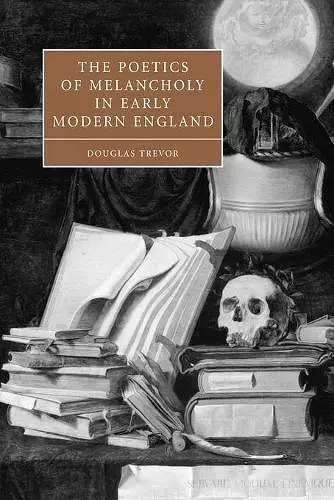The Poetics of Melancholy in Early Modern England
Format:Paperback
Publisher:Cambridge University Press
Published:25th Jun '09
Currently unavailable, and unfortunately no date known when it will be back
This paperback is available in another edition too:
- Hardback£94.00(9780521834698)

This book explores how attitudes toward, and explanations of, human emotions change in England during the late sixteenth and early seventeenth century.
The Poetics of Melancholy in Early Modern England explores the growing cultural signification of sadness in Renaissance England, and considers what the wide-ranging writings of self-described melancholics tell us about the era in which they lived.The Poetics of Melancholy in Early Modern England explores how attitudes toward, and explanations of, human emotions change in England during the late sixteenth and early seventeenth century. Typically categorized as 'literary' writers Edmund Spenser, John Donne, Robert Burton and John Milton were all active in the period's reappraisal of the single emotion that, due to their efforts, would become the passion most associated with the writing life: melancholy. By emphasising the shared concerns of the 'non-literary' and 'literary' texts produced by these figures, Douglas Trevor asserts that quintessentially 'scholarly' practices such as glossing texts and appending sidenotes shape the methods by which these same writers come to analyse their own moods. He also examines early modern medical texts, dramaturgical representations of learned depressives such as Shakespeare's Hamlet, and the opposition to materialistic accounts of the passions voiced by Neoplatonists such as Edmund Spenser.
"A highly significant history of the passions...." -SEL: Studies in English Literature, 1500-1900
"...the visual parameters are set forth with laudable clarity and comprehensiveness. Kiefer's work, which concludes with an exemplary thirty-five page select bibliography, is a welcome addition to Shakespeare studies." -Clifford Davidson, Modern Philology
"Douglas Trevor's Poetics of Melancholy is an illuminating and thought-provoking analysis of the representation of sadness in early modern English writing." -Ian Frederick Moultan, Arizona State University Polytechnic
"[T]his is a fascinating, probing book." -David W. Swain, Southern New Hampshire University, American and English Studies
"This book constitutes a major contribution to Renaissance studies: lucidly written, ambitious in its choice of topic and of texts, and opulently intelligent in the details of its literary analysis." --Katherine Elsaman Maus, University of Virginia.
ISBN: 9780521114233
Dimensions: 229mm x 152mm x 15mm
Weight: 400g
268 pages